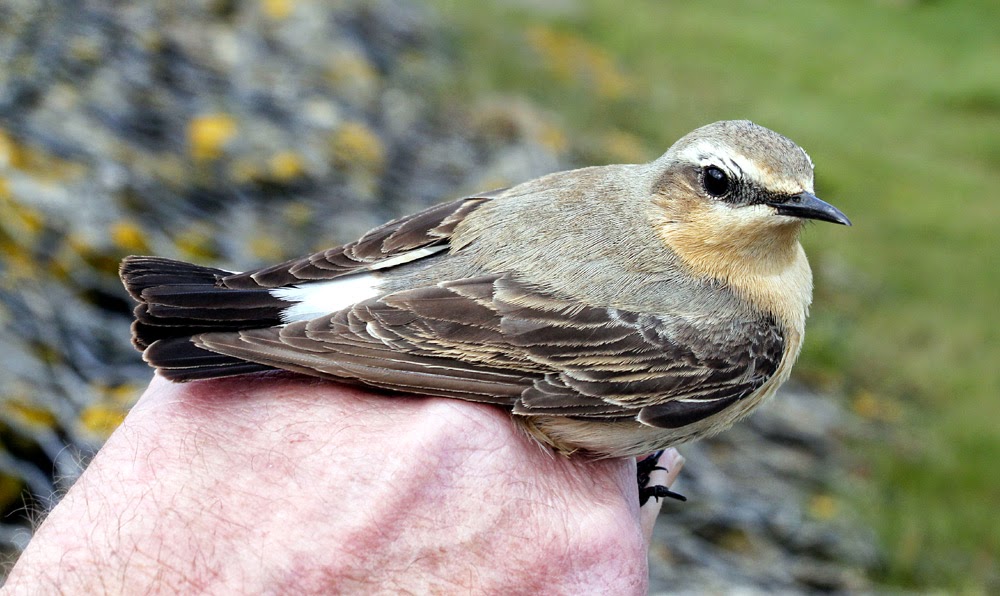Following a lack of visits for 10 days or more I met up with Andy at Oakenclough this morning for a visit to our ringing site. Andy was in Gibraltar for a week whilst I’d stuck to birding around Pilling and so missed out on visiting Oakenclough. And all of this this during a period when a number of migratory arrivals were probable everywhere! Such are the choices of birders who cannot be in two places at once.
I was looking forward to hearing about Andy’s ringing and birding trip to Gibraltar and to see his pictures of exotica like Bee Eater, Black Stork, Serin, Black Kite and Bonelli’s Warbler, to name but a few. After being suitably impressed with his bird portraits I could but hope that one day in the future I might see a Bee Eater in the hand. Maybe soon when I holiday in Menorca?
Bee Eater
This morning lacked colourful Mediterranean birds but there were good numbers of the more mundane green/yellow Willow Warblers on view, some of which may well have seen Gibraltar en route to Lancashire. Andy did mention that in amongst the exciting species Willow Warblers had been the most numerous bird of the previous week!
By the end of our short session the count was of a minimum of 15 singing males. Female Willow Warblers usually arrive a number of days after males and it is only from then onwards that the competition for mates and nesting sites turns more serious. We supposed that very few females were around due to the male songsters remaining high in the trees in the small piece of woodland already adopted by each one. We barely saw a Willow Warbler near the ground, the mandatory position for the mainly female construction of a nest.
There was little else in the way of warbler activity this morning apart from a single Blackcap. The Blackcap found our nets as did 3 Lesser Redpolls and 3 Willow Warblers. One of the female redpolls had a distinctive brood patch which signified breeding condition and a probable nest nearby.
Willow Warbler
Blackcap
Lesser Redpoll
We received details of a Lesser Redpoll caught here at Oakenclough last month on 14th March, a bird bearing the ring D618555, so not a ring from our own stock. The British Trust for Ornithology (BTO) tell us the bird was ringed in Market Drayton, Shropshire on 2nd February 2014, the previous winter to our own capture. This is a duration of 405 days and the distance between the two sites of 116 km.
The details are rather inconclusive except that we caught D618555 during a period of Spring migration 2015 when Lesser Redpolls were heading north in good numbers. Whether numbers of Lesser Redpolls spend winters in Shropshire I do not know for sure, but suspect not. This individual may have been on migration from south of Shropshire in February 2014.
“A” marks Oakenclough and “B” Market Drayton.
Lesser Redpoll - Shropshire to Lancashire
Otherwise birding: 6+ Lesser Redpoll, 2 Grey Wagtail, 2 Common Sandpiper, 2 Pied Wagtail, 1 Great-spotted Woodpecker, 1 Swallow plus several each of Curlew, Oystercatcher and Lapwing.
There’s more local birding soon from Another Bird Blog where anything is possible. Even Bee Eaters are not unheard of in Lancashire, so stay tuned.
Linking today to Anni's Birding Blog.
Linking today to Anni's Birding Blog.


















































.jpg)












